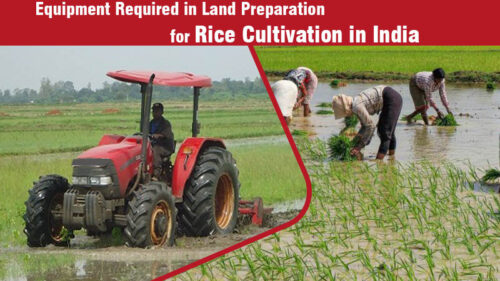
The Rich Tapestry of Rice Cultivation in India: Traditional Techniques and Modern Innovations
- Contact No.: 654412233
- Email ID: [email protected]
- Street: Pune-411013
- City: Pune
- State: Choose a State/Province
- Country: India
- Zip/Postal Code: 00
- Website: https://khetigaadi.com/blog/rice-cultivation-in-india/
- Listed: April 16, 2024 6:56 am
- Expires: 46 days, 7 hours
Description
Rice, the staple food for more than half of the world’s population, holds immense cultural, economic, and social significance in India. With its diverse agro-climatic zones and rich agricultural heritage, India boasts a plethora of rice cultivation methods ranging from traditional to modern. This article explores the multifaceted landscape of rice cultivation in India, shedding light on both age-old practices and contemporary innovations, while also delving into the benefits harvesters reap from this vital crop.
Traditional Techniques:
1. Transplantation Method: This method involves growing rice seedlings in nurseries and then transplanting them to the main field. Widely practiced in states like Punjab, Haryana, and Uttar Pradesh, it allows for better control over water usage and weed management.
2. SRI (System of Rice Intensification): SRI is a methodology that promotes the cultivation of rice with less water, fewer seeds, and wider spacing between plants. It emphasizes organic fertilizers and intermittent drying of fields. This method has gained popularity in states like Tamil Nadu and Andhra Pradesh, contributing to water conservation and increased yields.
3. Flooded Paddy Cultivation: Particularly prevalent in eastern India, flooded paddy cultivation involves submerging the fields with water throughout the growing season. This method facilitates weed suppression and creates an ideal habitat for aquatic organisms that contribute to soil fertility.
Modern Innovations:
1. Hybrid Varieties: The advent of hybrid rice varieties has revolutionized rice cultivation in India. These varieties exhibit traits such as high yield potential, disease resistance, and tolerance to environmental stresses. Farmers across the country, especially in states like Punjab, Bihar, and West Bengal, have embraced hybrid rice cultivation, reaping the benefits of increased productivity and profitability.
2. Mechanization: Mechanized rice cultivation, including the use of power tillers, rice transplanters, and combine harvesters, has significantly reduced labor requirements and improved efficiency. States like Punjab and Haryana have witnessed widespread adoption of mechanized practices, leading to higher yields and lower production costs.
3. Precision Farming: With advancements in technology, precision farming techniques such as remote sensing, GIS (Geographic Information System), and GPS (Global Positioning System) have been employed to optimize resource utilization and enhance crop management. These techniques enable farmers to make data-driven decisions regarding irrigation, fertilization, and pest control, resulting in improved crop health and yield.
Benefits for Harvesters:
1. Increased Yield: The adoption of modern cultivation practices and improved varieties has led to significant increases in rice yields across India. Higher yields translate to greater income for farmers, thereby improving their standard of living and economic well-being.
2. Labor Savings: Mechanization and automation in rice cultivation have reduced the drudgery associated with manual labor, particularly during planting and harvesting seasons. This allows farmers to allocate their time and resources more efficiently, leading to improved work-life balance and overall quality of life.
3. Sustainable Practices: Techniques like SRI and precision farming promote sustainable agriculture by minimizing resource inputs such as water, seeds, and fertilizers, while also reducing environmental impact. By adopting these practices, harvesters contribute to long-term environmental conservation and biodiversity preservation.
4. Market Access: Improved crop quality and higher yields enable farmers to access premium markets and command better prices for their produce. This not only enhances their economic returns but also strengthens their bargaining power within the agricultural value chain.
In conclusion, rice cultivation in India is characterized by a rich tapestry of traditional techniques and modern innovations, each contributing to the country’s agricultural diversity and food security. While traditional methods continue to be integral to the farming practices of many regions, the adoption of modern technologies has ushered in a new era of productivity and sustainability. Harvesters stand to benefit immensely from these advancements, enjoying increased yields, reduced labor, and enhanced livelihoods. As India strives to meet the challenges of a growing population and changing climate, the continued evolution of rice cultivation practices will play a crucial role in ensuring food sufficiency and rural prosperity.
14 total views, 2 today